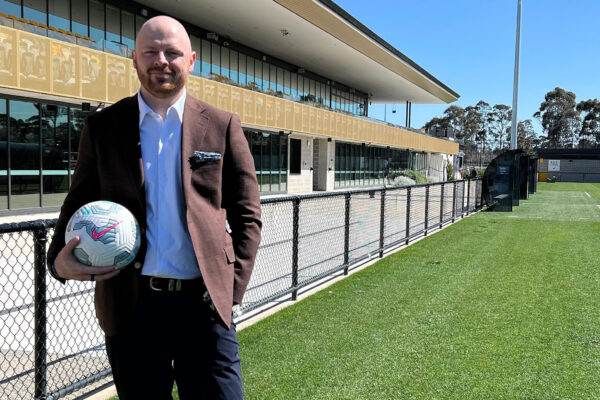
In 2023, every inch counts. Whether it be on the field, the gym, or the training pitch. Coaches and players alike are desperate to obtain as much information as they can on their game, in a way in which they can digest and utilise to better their performance.
Metrica Sports is revolutionising the data analysis space, with applications across a variety of sports, including American football, basketball, rugby, and football. Using the Metrica Cloud Engine, Metrica Sports PLAY unleashes the potential from automated tracking data, with data packs suited to all levels of the game, enriching presentation, and video sessions. Metrica Sports offers a free version of the software, to allow smaller teams to test this out to determine the best possible options for the success of the club.
Metrica Sports has partnered with more than 300 professional teams across 80 countries worldwide.
PLAY goes one step further than the competitors. It visualises data in more than just graphs and charts. PLAY shows live 2D fields with moving markers to outline structure in play, in reference to where the ball and opposition is. This can be beneficial to coaches to determine if there is a hole that can be exploited more so by the opposition, such as being too compact in transition allowing the opposition to nullify counter attacks.
PLAY offers 3 methods of tracking players in game, each of which have their own benefits. Manual tracking takes the longest and allows coaches to manually select what in any given frame they want to analyse. However, what they select only covers a single frame, and must go through and select what they want across different frames.
Automatic tracking takes almost 1/3 of the time, with the ability to manually opt in or out of selected targets on the field to track. Metrica uses the example of tracking a defensive line as the ball is shifted onto the sideline, as one defender is engaged, showcasing the distance between the other defenders, and their direction changes to suit.
Automated tracking is similar to automatic but is simply effortless. Everything is tracked already, the ball and all players are tracked, and you can choose what to extrapolate from the data it collects, as well as how long into a recording the software needs to extrapolate the data from.
But with so much data and analysis, will some things may be overlooked? No chance. PLAY allows for playlists of clips from a match can be generated with tags to filter out of highlights and clips exactly what a coach or analyst wants to extrapolate. For instance, PLAY can allow generate tags for all clips that include building out from the back, by determining when there is possession in the defensive third. Along with attacking clips, transition etc., the ability to phase these out and only select the building out from the back will save an abundance of time, allowing coaches to further zone in on what is really important in these clips, and develop a strategy to overcome any issues found.
PLAY has a variety of analysis options for how coaches and staff want to structure a video session with players in preparation for the next match or look back at last weeks. Coaches have the ability to upload entire match long pieces of footage, and can either manually, or as described before, have PLAY’s Metrica Cloud Engine do all the hard work for you. The options are limitless for any football club who wishes to strengthen their analytical and tactical capabilities.
PLAY’s automated tracking data saves countless hours to provide a superior product to coaching staffs across the globe. Tagging clips with key phrases allows coaches to quickly find examples of focal points in the match to be analysed and investigated. The easy to navigate software is easy for both coaches to use, but to also present to other staff, board members and players, with relevant and appealing graphics as opposed to traditional stats and graphs. The automatic tracking feature can allow coaches to opt in and out of necessary analytical points to cater to what coaches explicitly want.
For more information on how Metrica Sports can benefit your coaching staff, click here














